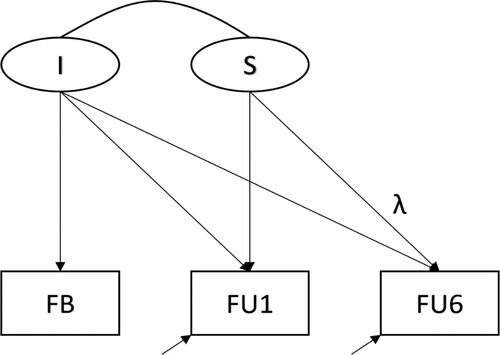Figures & data
Figure 1. The multigroup structural equation model. Note: The identical model is simultaneously estimated in all groups, allowing for group differences. Due to model identification, measurement residuals can only be estimated for 1-month follow-up (FU1) and 6-months follow-up (FU6) and not for feedback (FB). Additionally, only the loading parameter of FU6 on the latent slope is estimated. All other loading parameters are fixed to unity (not depicted). I = Intercept; S = Slope.

Table 1. Goodness of fit coefficients of 2-group comparisons.
Table 2. Parameter estimates of the unrestricted multigroup longitudinal model.

